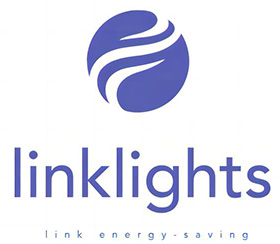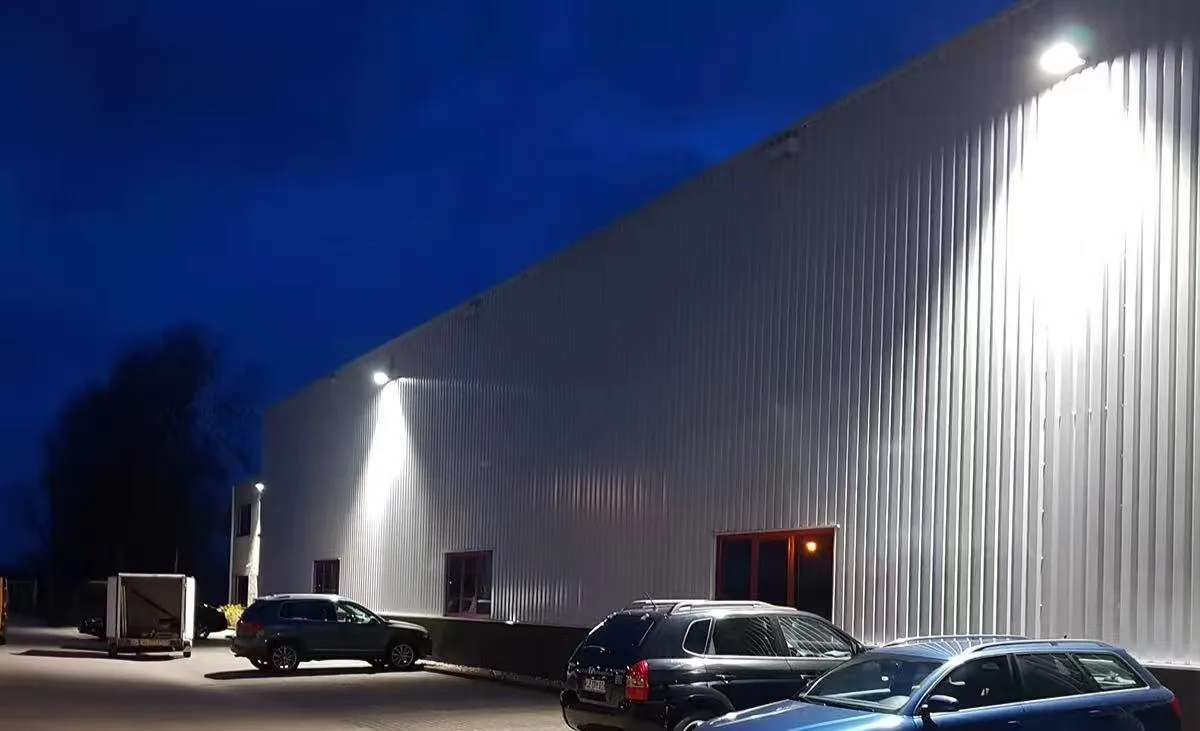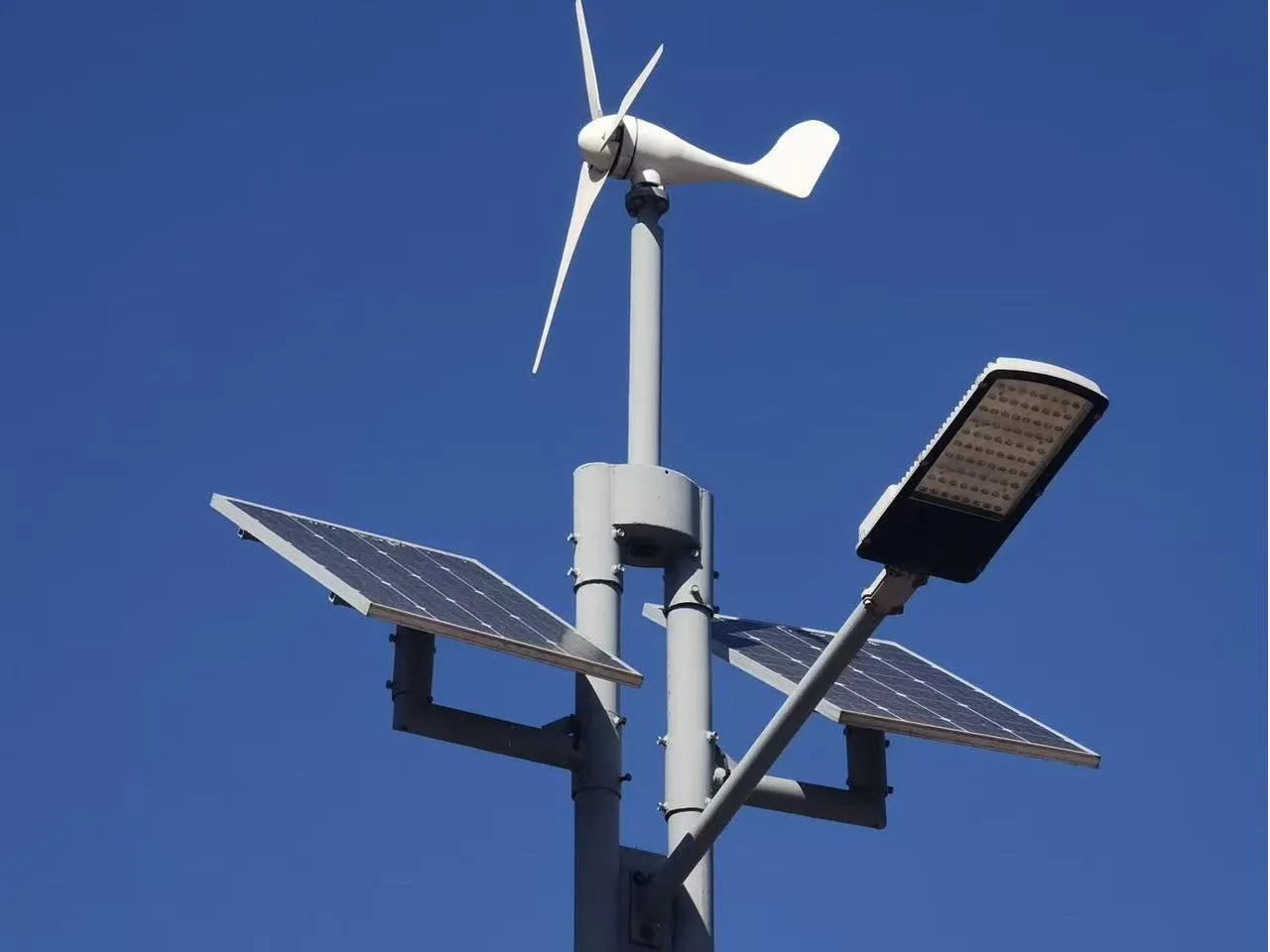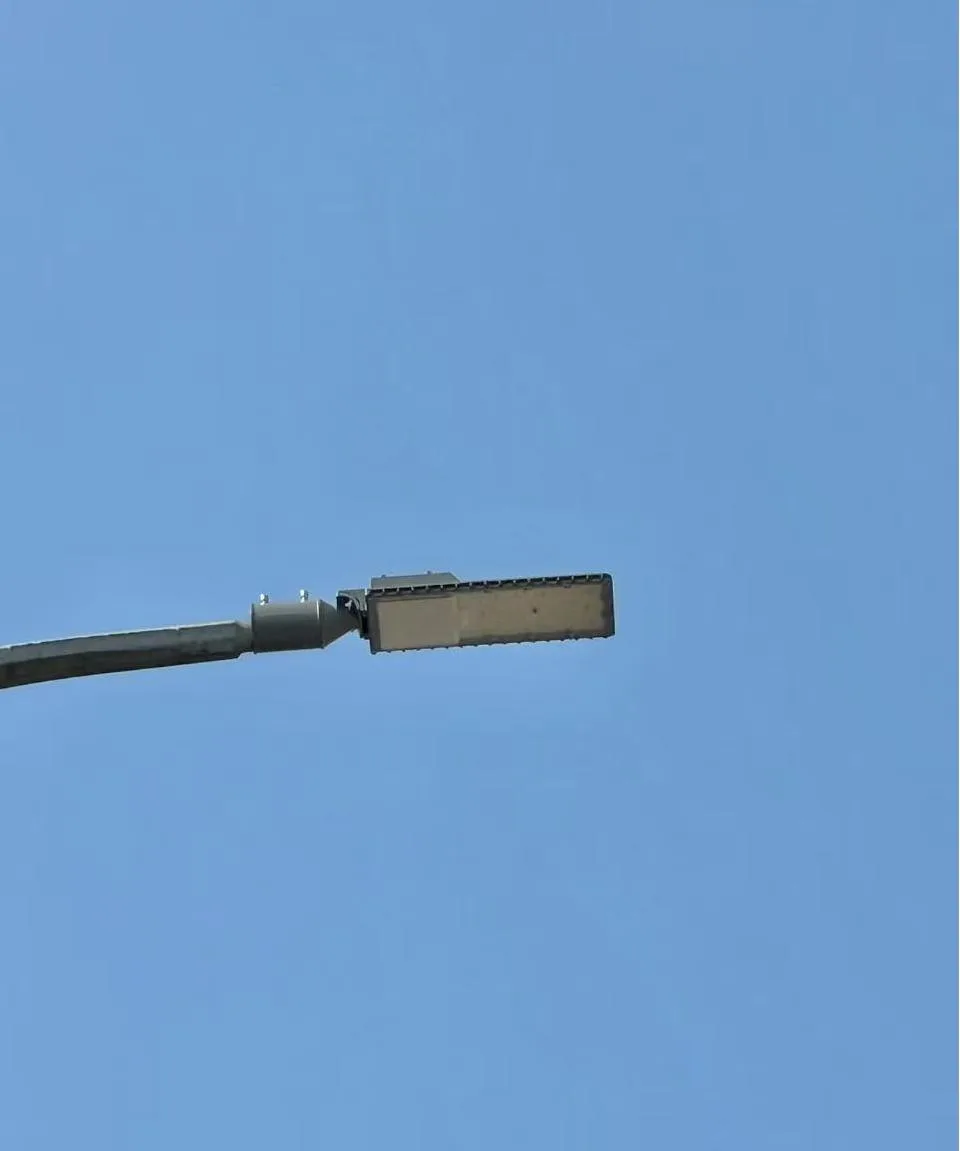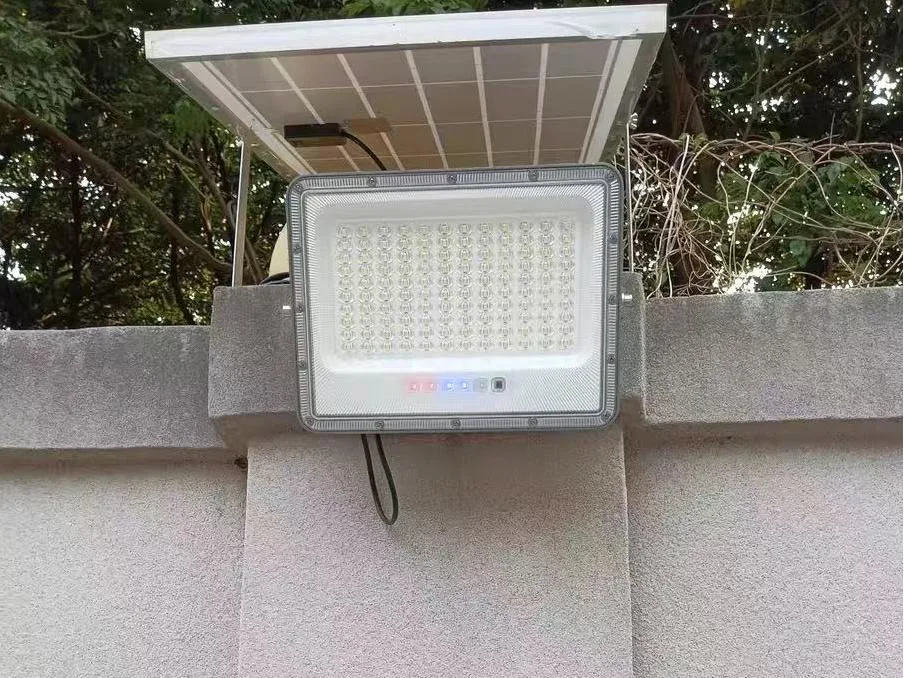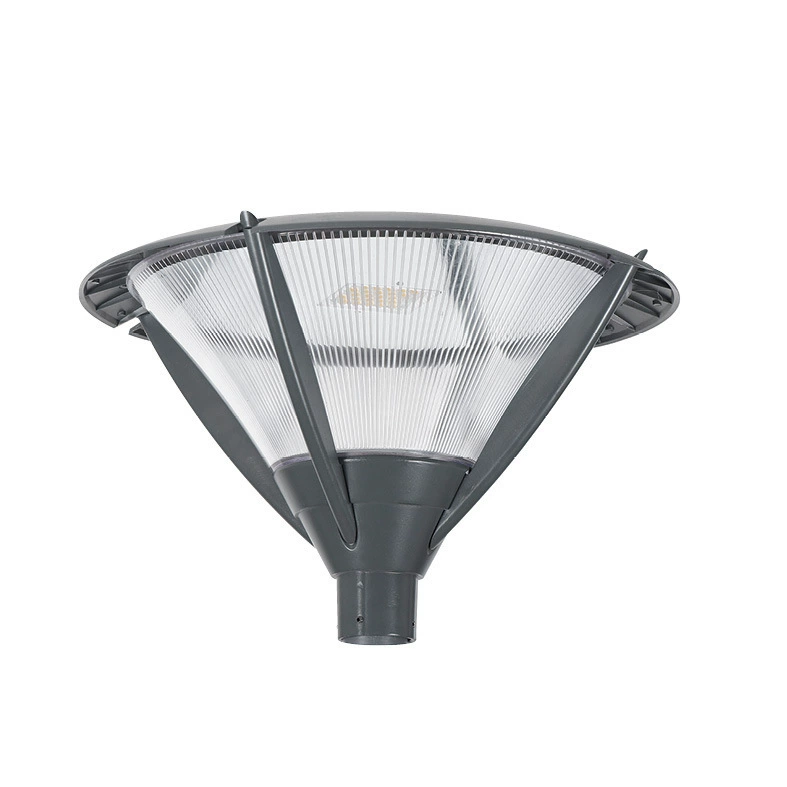Introduction: Why Anti-Glare Street Lighting Matters Today
Led lights street lamps are important in cities. They help keep roads, sidewalks, and public places safe and easy to use at night.For many years, cities used high-pressure sodium (HPS) and metal halide lamp fixtures. But these light bulbs traditional had problems. They used too much energy, did not last long, and gave off poor-quality light.Now, street light led fixtures are changing everything. led bulbs for street lamps can save 50–70% of energy. They also last much longer and give brighter, clearer light.Because of this, more cities are switching to LED lights. They want to save money, use less energy, and help reduce light pollution environmental effects. LED street lights are a smart choice for today and the future—for both governments and businesses.
what is a glare?
Definition and Types of Glare
Glare of light happens when light is too bright or shines unevenly. This can make it hard to see and feel uncomfortable. It often comes from brighter led lights that are not aimed or shielded well.
There are two main types of glare:
Discomfort Glare: This kind of glare can hurt your eyes, make them tired, and make it hard to pay attention.
Disabling glare: This glare makes it hard to see clearly. It spreads light inside your eyes and is very dangerous when driving at night.
light distribution types
How Glare Impacts Roadway Safety
Driver Distraction: Street lights that are too bright or not pointed the right way can make it hard for drivers to see people or read signs.
Pedestrian Risks: Glare can blind drivers near crosswalks or bike lanes, making these areas less safe.
Industrial Areas: In places like factories or loading zones, glare can make it harder for workers to see clearly and do their jobs well.
Why Choose Anti-Glare LED Street Lights?
Reduced Visual Discomfort
Anti glare lights use special lenses, wide light patterns, and soft covers to reduce strong, direct light. This helps create smooth and comfortable lighting for drivers, bike riders, and people walking.
Compliance with Lighting Standards
Anti glare light solutions often comply with Unified Glare Rating (UGR) standards (UGR < 19) and meet requirements of IES RP-8 (USA) and EN 13201 (Europe). Compliance is vital for municipal projects and public safety.
Enhanced Energy Efficiency
Modern anti-glare LED lights are very bright and use little energy. They give more light for each watt of power. This helps cities use less energy while still keeping streets well-lit.
Better Environmental Impact
By reducing upward light spill and glare, anti-glare LEDs help fight light pollution. This helps protect the night sky and cuts down on wasted energy. Understanding how does light pollution affect the environment shows why these lights are so important—they help wildlife, save energy, and keep our skies darker at night.
Understanding Light Pollution
What is light pollution?
Light pollution happens when there is too much artificial light or when light goes the wrong way. It can harm nature, people’s health, and stargazing.
There are three main types:
light pollution skyglow: The night sky looks too bright because light shines upward and spreads.
light pollution glare: Lights that are too bright can hurt your eyes and make it hard to see.
Light Trespass: Light goes where it’s not wanted, like into homes or natural areas.
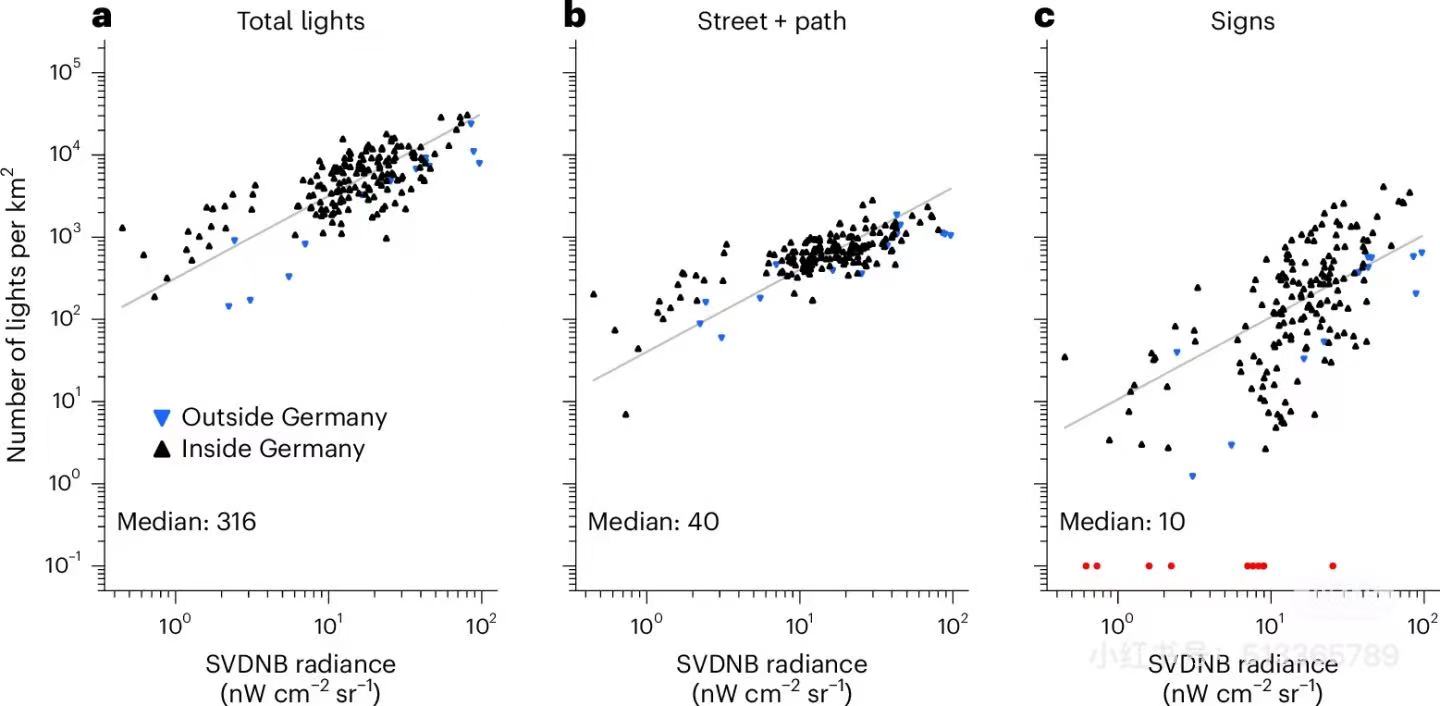
Real-World Light Pollution Data from Citizen Science (Germany)
Although streetlights make up only 8–33% of total urban light sources, they remain illuminated throughout the night, unlike most other lighting such as shop signs or residential windows that tend to turn off after midnight. This makes streetlights one of the most persistent contributors to skyglow, especially during late-night hours when ambient lighting decreases elsewhere.In addition,streetlights are mounted high and spread across city roads, even small amounts of upward light can greatly increase nighttime brightness. This is especially true for upward lighting fixtures that lack proper shielding.However, In Germany, only 48% of streetlights use fully shielded outdoor lighting, , while another 49% are only partially shielded—allowing a considerable amount of light to scatter upward into the sky. By comparison, lights mounted on building facades are even less shielded, and pathway lighting is frequently unshielded.These findings illustrate how poorly shielded and continuously active public lighting—particularly streetlights—contributes substantially to skyglow, glare pollution, and light trespass. That’s why anti glare lighting is a key solution in reducing light pollution and improving nighttime visibility.
Source: Citizen science illuminates the nature of city lights, Nature Cities (2025).Based on data collected in Germany through the Nachtlichter citizen science project and comparative studies including Flagstaff, AZ, USA.
Health and Environmental Consequences
Human Health: Too much light at night can confuse the body’s sleep cycle. It can cause trouble sleeping, headaches, and lower melatonin levels.
Wildlife Impact: Bright lights can disturb animals that are active at night. It can change how they eat, move, or find mates.
Energy Waste: Bad lighting uses more electricity than needed, which adds to pollution and carbon emissions.
Case Study: Impact of Artificial Light on Migratory Birds
(Source: DarkSky.org)
Birds that migrate or hunt at night navigate by moonlight and starlight. Artificial light can cause them to wander off course and toward the dangerous nighttime landscapes of cities. Every year millions of birds die colliding with needlessly illuminated buildings and towers. Migratory birds depend on cues from properly timed seasonal schedules. Artificial lights can cause them to migrate too early or too late and miss ideal climate conditions for nesting, foraging, and other behaviors.

How Anti-Glare Lighting Reduces Light Pollution
Anti-glare lighting is one of the best ways to reduce light pollution. Lights withfull-cutoff designs shine downward and help stop skyglow. smart street light control system lower the brightness when there is less traffic at night.To make this work well, led street light manufacturers need to use good materials, smart designs, and precise lenses. The next part will explain how planning the direction of street lights—side to side and up and down—can make roads safer and cities more eco-friendly.
Roadway Safety and Anti-Glare Lighting Best Practices
Horizontal light distribution:According to lighting rules (like the IESNA RP-8 standard), street lights use different beam shapes, called Type I to Type V.Type III lights shine out to the side in a wide pattern, about 40 degrees across. They are often placed near the edge of the area that needs light. The light can reach about 1.75 to 2.75 times as far as the pole is tall, on the street side.This type works best when the area being lit is not wider than 2.75 times the height of a street light.This sideways light spread is called horizontal distribution. It controls how far and wide the light goes on the ground.
Vertical lighting distribution:How high or low a light shines is called vertical distribution. This depends on the light’s design and how it controls the beam.Full-cutoff lights are made to shine only downward. They do not send any light above the horizontal line. This helps reduce skyglow and keeps light from spilling into unwanted areas.
Illuminance Uniformity:By choosing the right light type, height, and distance between poles, designers can make sure the area is lit evenly—without bright spots or dark areas.Using special shapes like batwing optics and putting lights in the right places from different angles helps create smooth, even lighting.
Linklights follows global rules to make safe, eco-friendly street lighting. The company focuses on saving energy and making sure light is spread evenly.Their lights shine only where needed, so less light is wasted. By controlling how high the light goes and using smart designs, Linklights helps reduce glare, skyglow, and light that spills into homes or natural areas. This makes nighttime lighting better for people, animals, and the environment.
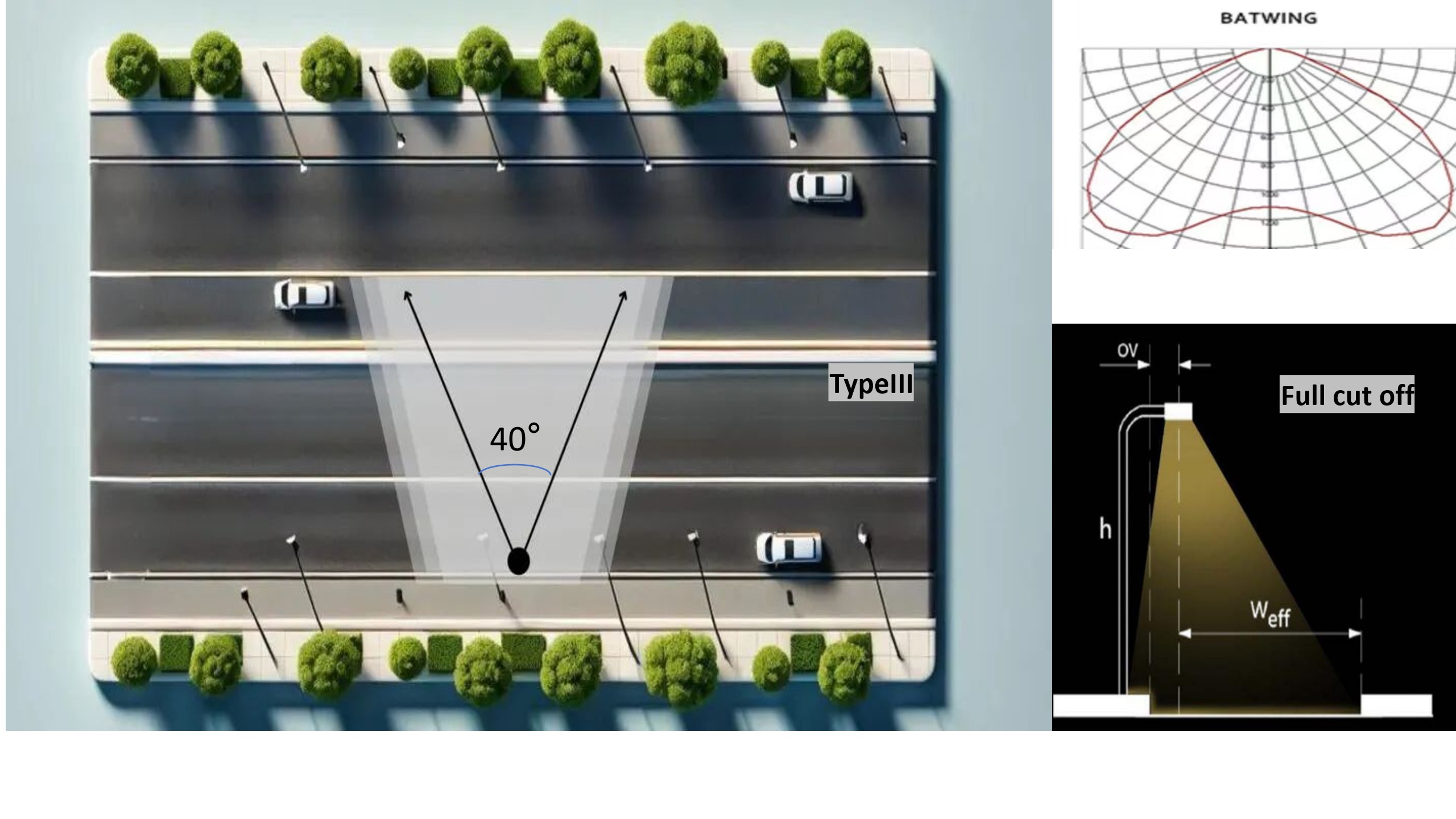
Highway Lighting with Low Glare Optics
Highways need bright lights, but too much brightness can hurt drivers’eyes and make it hard to see. This is called disability glare, and it can be dangerous.On city roads with poles that are 8–10 meters tall, Type III optics with a small tilt (about 15°) help shine the light along the road—not on grass or buildings. This makes the light smooth and even, so drivers don’t see sharp changes between bright and dark spots.This setup works well with poles on one side or in a zigzag layout, saving money on poles and wiring.Using batwing optics also spreads the light evenly and cuts down glare. This helps the lights meet safety and environmental rules.
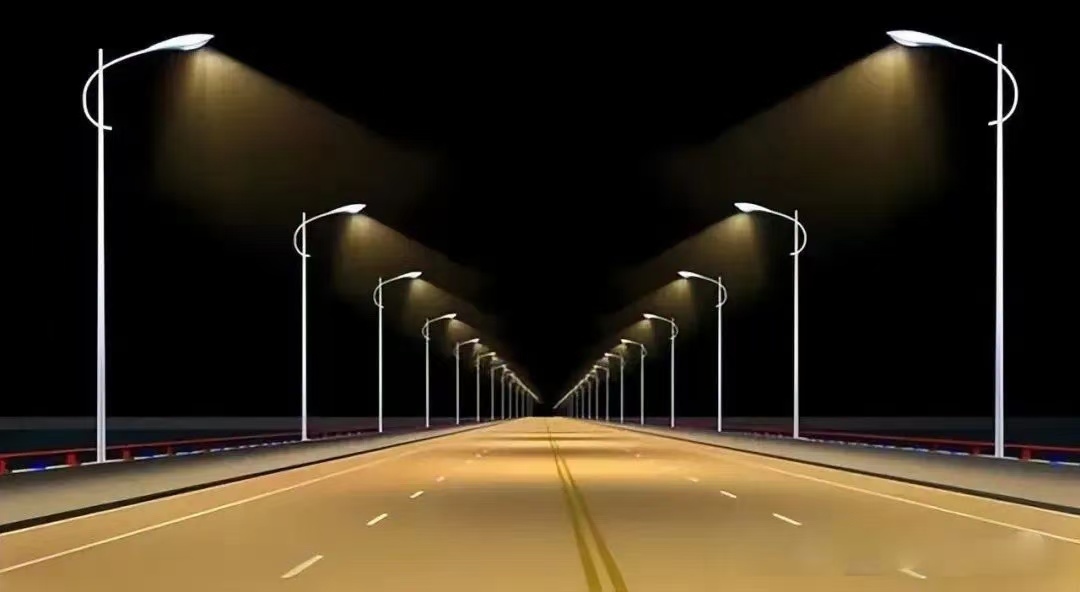
Urban Intersections and Pedestrian Crosswalks
For city roads with less traffic, Linklights suggests using poles that are 6–8 meters (20–26 feet) tall. They use Type II or III optics with a small tilt of 10–15°.When these lights have full-cutoff lenses and motion sensors, they can dim when fewer people are around. This setup gives safe, clear lighting without glare. It also saves energy and cuts down on skyglow and unwanted light going into homes or nature areas.
Bike Lanes and Pedestrian Pathways
Warm white led street lights (3000–4000K) give off a yellow soft light that is easy on the eyes. These soft-yellow LED street lights help cyclists and people walking feel more comfortable and safe.With the right pole spacing and anti-glare reflectors, the light stays even. There are no dark spots or sharp contrasts, so the path is safer to use.
Led tunnel lighting and Black-Hole Effect Prevention
Gradient anti-glare lighting uses high-quality LEDs and smooth dimming. This helps drivers’ eyes adjust when going in or out of tunnels.Controlled beam angles stop bright light from bouncing off tunnel walls and roads, reduced glare.By using these smart city lighting system, cities and companies can make roads safer, save energy, and reduction of light pollution.
Certifications and Compliance
Global Standards
IES RP-8: Roadway lighting guidelines in North America.
EN 13201: European roadway lighting standard.
ASHRAE 90.1: Energy efficiency codes for exterior lighting.
Product Certifications
DLC Premium: Required for many government-funded projects in North America.
CE, RoHS, ENEC: Essential for European markets.
Cost, ROI, and Long-Term Value
Anti-glare LED street lights save 50–70% energy compared to HID or metal halide lamps. Their modular, corrosion-resistant design lowers maintenance needs and costs. With a typical payback period of 2–4 years, these fixtures offer strong long-term value, making them ideal for cities seeking energy efficiency and reduced total ownership cost.
Future Trends in Street Lighting
Smart LED street lighting combines IoT, AI, solar, and 5G to reduce energy use, improve safety, and support smart cities. Features include dimming during low traffic, fault detection, data collection, and human-centric brightness control. Future trends like solar hybrid systems and smart poles enable communication, sensing, and sustainable lighting.
Conclusion
To succeed in the era of smart urban lighting, manufacturers must deliver anti-glare LED systems that combine optical precision, energy efficiency, and smart controls—meeting city needs while reducing pollution and long-term costs.
FAQ
1. What is glare in street lighting, and why is it dangerous?
Glare is excessive brightness or uneven light distribution that causes visual discomfort or reduces visibility. In street lighting, glare can blind drivers, reduce reaction time, and increase the risk of accidents, especially at night.
2. How do anti-glare LED street lights improve safety?
Anti-glare LED fixtures use special optical lenses, batwing distribution, and full-cutoff designs to provide uniform lighting without blinding drivers or pedestrians. This reduces visual fatigue and enhances roadway safety.
3. What is light pollution, and how can it be reduced?
Light pollution is the excessive or misdirected use of artificial light, leading to skyglow, glare, and light trespass. Anti-glare LEDs, combined with downward-focused beams, adaptive dimming, and full-cutoff optics, effectively reduce light pollution.
4. Which lighting standards apply to anti-glare LED street lights?
Key standards include IES RP-8 (USA), EN 13201 (Europe), and ASHRAE 90.1 for energy efficiency. Many municipal projects also require DLC Premium, CE, and RoHS certifications.
5. How can I choose the right pole height and spacing for road safety?
For highways, poles are typically 10–12 meters high with 30–40 meters spacing. For urban streets or crosswalks, 6–8 meters is recommended. Proper spacing ensures uniform light distribution and minimizes glare.
6. How do smart street lighting systems reduce energy waste?
Smart lighting integrates IoT controls, motion sensors, and adaptive dimming to adjust brightness based on traffic or time of day, reducing energy consumption by up to 40% while maintaining safety.
7. Are anti-glare LED lights more expensive than traditional lights?
While the initial cost may be higher, anti-glare LEDs offer 50–70% energy savings, lower maintenance costs, and a typical payback period of 2–4 years due to reduced energy and operational expenses.
8. Can anti-glare LED fixtures be customized for specific projects?
Yes, many manufacturers provide OEM/ODM customization, including tailored optical designs, pole materials (steel, aluminum, composite), and smart lighting features for highways, tunnels, or pedestrian zones.
9. How do anti-glare LEDs contribute to sustainability?
By reducing energy use, preventing light spill, and using eco-friendly materials, anti-glare LEDs lower carbon emissions and support sustainable urban development.
10. What future trends are shaping street lighting?
Key trends include solar-powered hybrid lights, AI-driven adaptive lighting, and 5G smart poles that integrate communication, data, and lighting functions.
